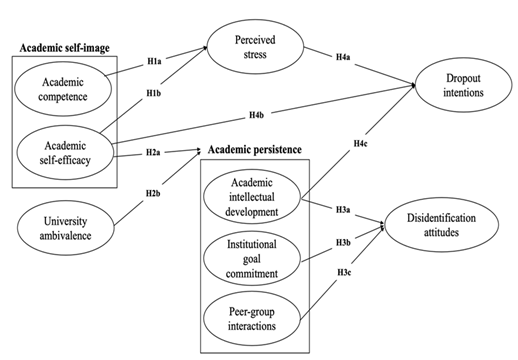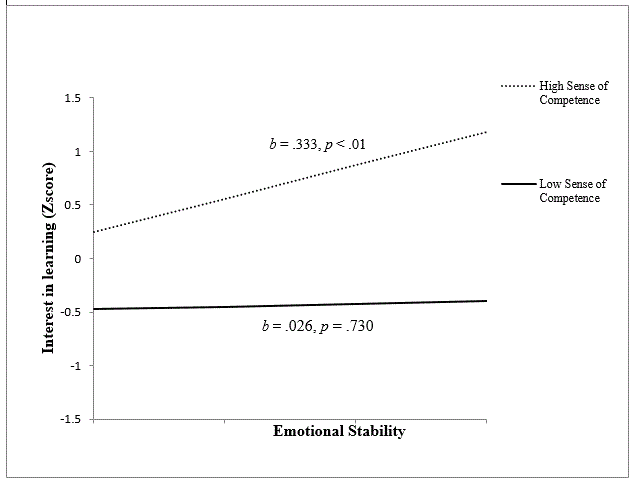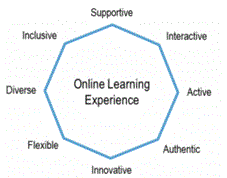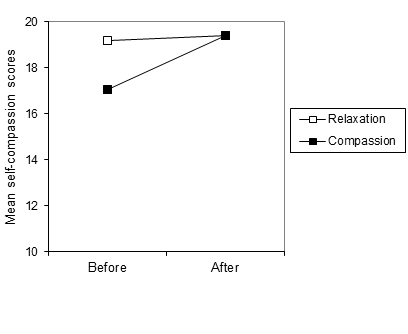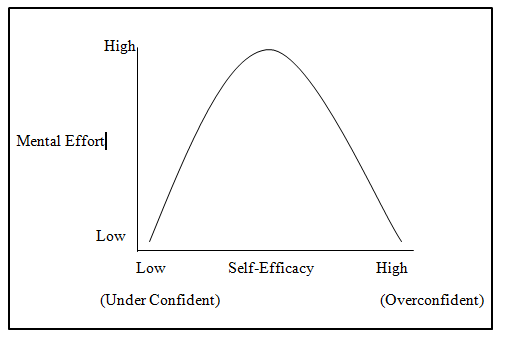Interdisciplinary Education and Psychology
Interdisciplinary Education and Psychology publishes papers that address different psychological aspects of educational processes and aims at making a significant contribution to the understanding of advances in this precinct by placing great value on research methodology. We aim to publish research that has an international appeal to researchers. Authors can submit quantitative and qualitative papers, studies making a significant contribution to the understanding of learning processes, applying psychological methods in different settings, pre-school and special learning, informal or formal, or industry can also be considered.
Topics include, but not limited to:
- Interdisciplinary Education
- Psychology in Education
- Cross-Disciplinary Learning
- Educational Psychology
- Integrative Curriculum
- Interdisciplinary Teaching Methods
Editorial Contact
Sarah Cowan, Managing Editor
Journal Information
ISSN: 2576-8271
Current Volume: Volume 4, Issue 1
Open Access: For all article types
Average time to first decision: 35 days 2024 (31 days in 2023)
Impact
The following citation metrics are produced by abstracting and indexing databases using their respective datasets.
Google Scholar
ROAD
Usage
2024 Full Text views: 48233
2023 Full Text views: 42173
Speed
Acceptance rate: 26.5% (2024)
Submission to first decision: 35 days (2024)
Submission to publication: 51 days (2024)
Benefits of publishing with us
Open Access
All articles published by Interdisciplinary Education and Psychology are made freely and permanently accessible online immediately upon publication under a Creative Commons license, without subscription charges or registration barriers. For more information, visit our Open Access policy.
Article Processing Charges
Interdisciplinary Education and Psychology accomplish global open access. The journal, therefore, levies an affordable publication charge of $1295 for each article accepted for publication.
Peer Review — High standard, rigorous peer review
All articles that reach us undergo a double-blind peer review by at least two anonymous reviewers before being considered for publication in the journal. Please refer to Peer Review Policy for more details.
Post-publication Open Peer Review
Following publication, the peer review comments would be made open for anyone to read. The authors have the option to make the peer review history publicly available after publication.
Research Promotion
Increased credibility and wider dissemination of published articles.
FEATURED ARTICLES
Senior Editors
Natalia Ralyk
Proctor Gallagher Institute
USA
Jessyca B. Wagner
Radiologic Sciences
Midwestern State University, USA
Hsiu-Lan Shelley Tien
Department of Educational Psychology and Counseling
National Taiwan Normal University, Taiwan
Mei-Lin Chang
Department of Secondary and Middle Grades Education
Kennesaw State University, USA
Meenakshi Ingole
University of Delhi, India
Michael Dal
University of Iceland, Iceland
Editorial Board
James Francis Woglom
Department of Art
Humboldt State University, USA
Paul Joseph Pace
Centre for Environmental Education and Research
University of Malta, Malta
Kalpana Sharma
Netaji Subhas National Institute of Sports
India
Anthony Muriithi Ireri
Department of Educational Psychology
Kenyatta University, Kenya
Jaydene Kale'a Silva
Leeward Community College
University of Hawai'i, USA
Evangelos Manolas
School of Agricultural and Forestry Sciences
Democritus University of Thrace, Greece
Flavia Lecciso
Faculty of Education and Social Sciences
University of Salento, Italy
Neil Taylor
School of Education
University of New England, Australia
Mary Bailey Estes
Department of Educational Psychology
University of North Texas, USA
Marinella Majorano
Department of Human Sciences
University of Verona, Verona, Italy
Holmes Finch
Department of Educational Psychology
Ball State University, USA
Bo Zhang
Department of Educational Psychology
University of Wisconsin–Milwaukee, USA
Karen C. Stoiber
Department of Educational Psychology
University of Wisconsin-Milwaukee, USA
HO Fiona Y.Y.
Department of Psychology
Education University of Hong Kong, China
Jocelyn H. Bolin
Department of Educational Psychology
Ball State University, USA
Hye-Jeong Choi
Georgia Center for Assessment
University of Georgia, USA
Maria Cristina Matteucci
Department of Psychology
University of Bologna, Italy
Garrett Albert Duncan
Department of Education
Washington University in St. Louis, USA
Fezile Özdamli
Faculty of Education
Near East University, Turkey
Serena Petrocchi
Institute of Communication and Health
University of Lugano, Switzerland
Michelle E. Bartlett
College of Education
North Carolina State University, USA
Emmanuel Manalo
Graduate School of Education
Kyoto University, Japan
Rachel Dryer
School of Psychology
Charles Sturt University, Australia
Daniel J. Henry
Auburn Center for Evaluation
Auburn University, USA
William Murrah
College of Education
Auburn University, USA
Toshi Sasao
Graduate School of Arts and
Sciences
International Christian University, Japan
Sung-Taek Lim
College of Education
Kangwon National University, Korea
Elayne Proesel Colón
College of Education
University of Florida, USA
Margarita Huerta
Department of Educational and Clinical Studies
University of Nevada, USA
Suzanne Bester
Department of Educational Psychology
University of Pretoria, South Africa
Jerrell C. Cassady
Department of Educational Psychology
Ball State University, USA
Isabella E.M. Coetzee
Faculty of Humanities
Tshwane University of Technology, South Africa
Michio Nomura
Graduate School of Education
Kyoto University, Japan
Beverley Argus-Calvo
Educational Psychology and Special Services
The University of Texas at El Paso, USA
Anna López
Department of Counseling and Educational Psychology
New Mexico State University, USA
Lisa Cushing
Department of Special Education
University of Illinois at Chicago, USA
José-Ginés Mora Ruiz
Oxford Centre for Higher Education Policy Studies
University of Oxford, UK
Qiu Wang
Department of Higher Education
Syracuse University, USA
H. Michael Crowson
Department of Educational Psychology
University of Oklahoma, USA
David M. Shannon
College of Education
Auburn University, USA
Min Liu
Department of Educational Psychology
University of Hawai‘I at Manoa, USA
B. Gloria Guzmán Johannessen
College of Education
Texas State University, USA
Katherine S. Lee
College of Education
University of Nevada, Las Vegas, USA
Tiberio Garza
Department of Educational Psychology & Higher Education
University of Nevada, Las Vegas, USA
Milda Bredikyte
Department of Developmental and Educational Psychology
Lithuanian University of Educational Sciences, Lithuania
Radhi Al-Mabuk
Educational Psychology and Foundations
University of Northern Iowa, USA
Helen M. Hammond
Department of Educational Psychology and Special Services
University of Texas at El Paso, USA
Rachel Christiane Weber
Department of Educational & Counseling Psychology
and Special Education
University of British Columbia, Canada
Esra A. Kaskaloglu-Almulla
Bahrain Teachers College
University of Bahrain, Bahrain
Sean A. Forbes
Educational Psychology
Auburn University, USA
Scott Snyder
School of Education
University of Alabama at Birmingham, USA
Rachel U. Mun
Department of Educational Psychology
University of North Texas, USA
Oladunmoye Enoch Oluwatomiwo
Department of Counselling and Human Development Studies
University of Ibadan, NIgeria
Damir Utrzan
University of Minnesota Medical School, USA
Candido J. Ingles
Miguel Hernández University of Elche, Spain
Jacob Williams
Education Northwest, USA
Travis R. Bradley
Behavioral Sciences
Stanford University School of Medicine
USA
Angelica Moè
University of Padua
Italy
Astrid Kendrick
University of Calgary, Canada
Guidelines for Submission
Manuscript Preparation
Submission and Components
Submissions to Rivera journals should include the following:
- Cover Letter
- Manuscript
- Figures and Tables (not mandatory)
- Supplemental Materials
Authors are encouraged to submit all the components as 'zip file', while submitting on our online system or via email as attachment.
Cover Letter should:
- briefly summarize or provide an outline of your manuscript, and why it is a worthy contribution to the concerned journal;
- specify the Rivera journal that your manuscript best pertains to;
- indicate, if applicable, that it is submitted as a part of Special Issue;
- specify the manuscript type (original research, review, etc.)
- detail any previous interaction(s) with Rivera Publications (previously submitted)
- specify all authors' information, including affiliation
- include acknowledgements and funding information (if applicable) and any competing interests
Authors
All persons who qualify for authorship should be listed as authors. However, corresponding author must ensure that the each author listed has substantially contributed or participated sufficiently in the work and is responsible for that particular portion of the manuscript. However, people who do not qualify for authorship should be listed in acknowledgements.
One author (corresponding author) should be listed with an asterisk, and should provide his or her email address. For the remaining authors, if applicable, following information should be included:
- First name and last name
- Complete affiliation, along with the country
- Email address (optional, but mandatory for corresponding author)
For example:
Robert Ludwig1
Yale University, New Haven, Connecticut, USA
Acknowledgements
This should include all the people who have contributed toward the work in one way or the other. However, authors are required to ensure that people acknowledged should agree to being so named.
Funding Information
List all the sources of funding, including relevant research grant numbers, as applicable. Also, authors are encouraged to list all the contributing authors associated with specific funding, if applicable.
Conflict of interest
Corresponding author is required to provide a statement of conflict of interest on behalf of all the authors. For further information, please refer to our Conflict of Interest Policy page.
Optional information
While we are not obligated to use these or recommend to the concerned Editor(s), we do encourage authors to provide names and contact information of 2–4 external reviewers and, if applicable, 1–2 opposed reviewers.
Manuscript Layout
All Social Sciences and Humanities journals do not have any arbitrary restrictions on the length of manuscript. Authors are encouraged to employ a standard and concise writing style. If you are not a native English speaker, we encourage you to utilize our language editing services or ask a native English speaking colleague for assistance.
All manuscript submissions can have the following sections:
- Title
- Abstract
- Keywords
- Main Text
- References
Title
The title should not exceed 200 characters and set in title case. The title should be concise, specific, and easily comprehensible to readers.
Abstract
The abstract should not exceed 300 words, and should be unstructured (without sub-heading such as objective, methodology, results, discussion, etc.). It should provide a clear description of the objective(s) of the study, demonstrate the methodology used, and summarize the study's prime conclusion(s). At the end, a statement regarding the study's significance to a potentially wider audience should be included.
Keywords
Authors can provide 4–6 keywords. First letter of each keyword should be upper case, and keywords should be separated by a semicolon (;).
References
Published work along with any citable items should be cited in the reference list. While we follow very stringent reference formats, authors need not to spend time formatting their reference. They can submit the manuscripts formatted in any reference style (style will be formatted once the manuscript is accepted for publication), but it is preferable that they adhere to the journal format.
For Social Sciences and Humanities
Rivera follows APA style. All the items are listed numerically. If no author is given, reference should start with title followed by date.
Example journal article: Sohrabi, H. R., Weinborn, M., Badcock, J., Bates, K. A., Clarnette, R., Trivedi, D., ...Martins, R. N. (2011). New lexicon and criteria for the diagnosis of Alzheimer's disease. Lancet Neurology, 10(4), 299-300.
In-text citation: (Sohrabi et al., 2011)
Example journal article with DOI: Almeida, R. A., Dickinson, J., Maybery, M. T., Badcock, J. C., & Badcock, D. R. (2010). Visual search performance in the autism spectrum ii: The radial frequency search task with additional segmentation cues. Neuropsychologia, 48(14), 4117-4124. http://dx.doi.org/10.1016/j.neuropsychologia.2010.10.009
In-text citation: (Almeida, Dickinson, Maybery, Badcock, & Badcock, 2010)
Example journal article when DOI is not supplied: Anderson, M., & Reid, C. (2009). Don't forget about levels of explanation. Cortex: A Journal Devoted to the Study of the Nervous System and Behavior, 45(4), 560-561. Retrieved from ScienceDirect.
In-text citation: (Anderson & Reid, 2009)
Example book: The Australian Oxford dictionary (3rd ed.). (1999). Melbourne: Oxford University Press.
In-text citation: (The Australian Oxford dictionary, 1999)
Example book (Editor): Hallinan, M. T. (Ed.). (2006). Handbook of the sociology of education. New York: Springer.
In-text citation: (Hallinan, 2006)
Example book (2 or more authors): Day, D.V., & Antonakis, J. (Eds.). (2012). The nature of leadership (2nd ed.). Los Angeles, CA: Sage.
In-text citation: (Day & Antonakis, 2012)
Example conference proceeding: Balakrishnan, R. (2006, March). Why aren't we using 3D user interfaces, and will we ever? Paper presented at the IEEE Symposium on 3D User Interfaces. http://dx.doi.org/10.1109/vr.2006.148
In-text citation: (Balakrishnan, 2006)
Example government reports: Western Australia. Department of Health Nursing and Midwifery Office. (2013). Aboriginal Nursing and Midwifery Strategic Plan 2011-2015. Retrieved from http://www.nursing.health.wa.gov.au/projects/
In-text citation: (Western Australia. Department of Health Nursing and Midwifery Office, 2013).
Example podcast: Zijlstra, M. (Presenter). (2011, May 28). Natural semantic metalanguage [Audio podcast]. Retrieved from http://mpegmedia.abc.net.au/rn/podcast/2011/05/lin_20110528.mp3
In-text citation: (Zijlstra, 2011)
Example unpublished thesis: Lockhart, E. (2009). The physical education curriculum choices of Western Australian primary school teachers (Unpublished master's thesis). University of Western Australia.
In-text citation: (Lockhart, 2009)
Example published thesis: May, B. (2007). A survey of radial velocities in the zodiacal dust cloud. Bristol, UK: Canopus Publishing.
In-text citation: (May, 2007)
Example webpage: Australian Psychological Society. (2008). Substance abuse: Position statement. Retrieved from http://www.psychology.org.au/publications/statements/substance/
In-text citation: (Australian Psychological Society, 2008)
Figures and Tables (if applicable)
Figures and tables should be included in the main text (manuscript) to aid in the review process. However, for larger files (size exceeding 10 mb) must always be submitted separately (should be properly mentioned in the main text, wherever applicable).
Figure captions and legends
Figure files should be included in the main document, and not as supplemental materials. Figure caption should be preceded by the figure, while figure legends should immediately follow the figure. Figure captions should be concise (not to exceed 18 words) and set in bold type. All figures should be numbered in sequence, using Arabic numerals, for example Figure 1, Figure 2, etc.
Table captions and legends
Tables should be cited in ascending numeric order. Each table should be preceded by a table caption (brief and specific; not to exceed 18 words), and immediately followed by table legends, if applicable, used to explain abbreviations and other supporting information about the data. Larger tables, however, can be submitted as supplemental materials.
Review Comments and Revision
Submission Instructions
While submitting a revised manuscript, the authors should include the following:
Revised manuscript (clean copy): Prepare a clean copy of your revised manuscript that does not show track changes. Rename this file as "Main Document".
Revised manuscript (marked-up copy): Include a copy of your manuscript file showing the changes you have made (track changes). Rename this file as "Manuscript with Track Changes".
Response to reviewers: Address the specific points made by each Reviewer and/or Editor. Include your responses to all the reviewers' and editors' comments and list the changes you have made to the manuscript. Rename this file as "Response to Reviewers".
Support Documents
Information integral to the comprehensive understanding of the manuscript, but is either too large to be included in the main document or due to any other reason, should be submitted as support materials, such as 3-D visualizations, interactive graphics, large tables and/or figures, and so on. However, authors should note that normal figures and tables should not be included under supplemental materials.
Articles in Press
Volume 4, Issue 1
Melvin Prince, Young Kim, Sunme Lee, and Yoon Jae Jeon
Research: Interdiscip Educ Psychol 4(1): 4
Oct 16, 2025 DOI: 10.31532/InterdiscipEducPsychol.4.1.004
George Gitau Muturi, Elizabeth Wanjiku Mwaniki, and Josephine Ngina Mutua
Research: Interdiscip Educ Psychol 4(1): 5
Nov 12, 2025 DOI: 0.31532/InterdiscipEducPsychol.4.1.005

J-Gate
J-Gate is bibliographic database to access global e-journal literature – indexing over 71 million journal articles, updated daily.
© 2026. Rivera Publications, Inc. All rights reserved.



